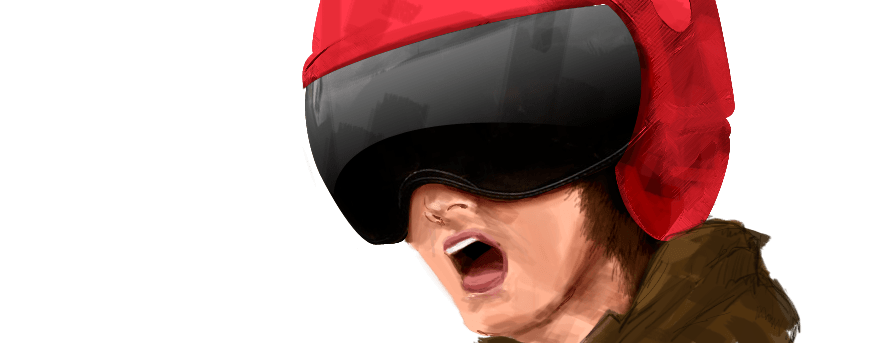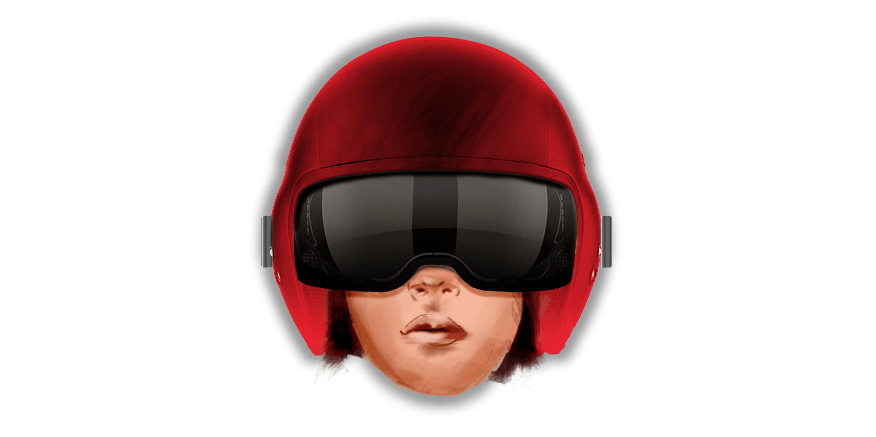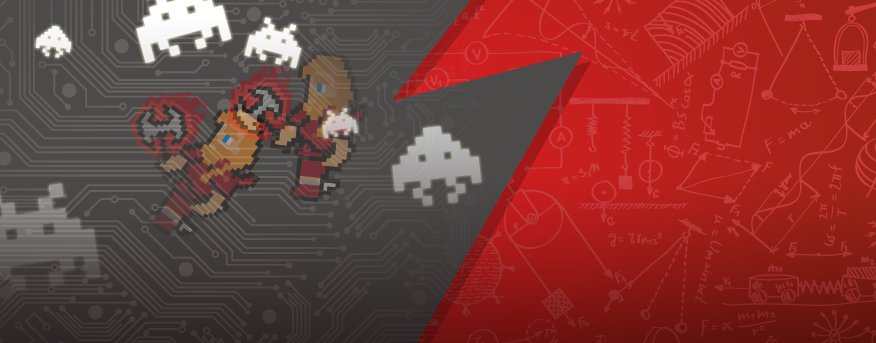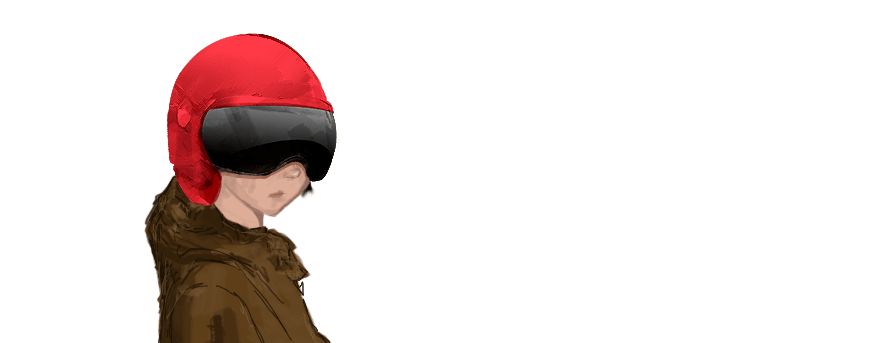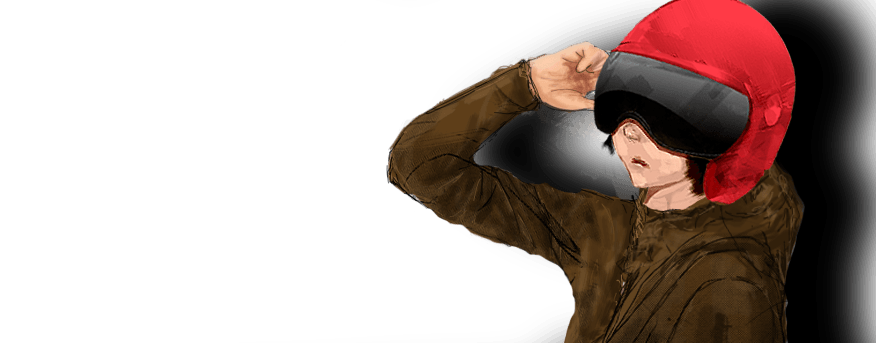1st Generation
The first generation of consoles introduced a revolutionary new concept in home entertainment to the world. They might seem primitive to us today, but they also introduced a huge number of people to some of the most enduringly popular features of gaming, such as multiplayer support and adjustable difficulty levels.
First-generation consoles were characterised by their two-tone graphics and a limited number of pre-programmed games. It wasn't until the second generation that game cartridges and microprocessors became the norm, kick-starting a whole new industry for third-party game development.
Magnavox Odyssey (1972)
Magnavox Odyssey (1972)
The world's first commercial home console, the Magnavox Odyssey brought videogames into the living rooms of thousands. While primitive by today's standards - users had to cling transparent plastic screens to their TVs to get the full graphical experience - it was the beginning of a revolution in home entertainment.
The Odyssey had the world's first light gun game, Shooting Gallery, and was the subject of the first ever lawsuit in videogame history in 1974 when Magnavox accused Atari of copying Pong from its flagship Table Tennis title.
Units sold:
330,000
Total number of games:
27
Memorable titles:
Shooting Gallery
Home Pong (1975)
Home Pong (1975)
Huge success in arcades and bars inspired Atari to develop a home version of its classic tennis game. The first Pong chip had the highest performance of any consumer product at the time.
APF TV Fun (1976)
APF TV Fun (1976)
Originally a 'Pong clone' console, later versions of the TV Fun included a light gun and additional games.
Philips Odyssey (1976)
Philips Odyssey (1976)
Philips began releasing its own versions of the Odyssey after acquiring Magnavox in 1974.
Wonder Wizard (1976)
Wonder Wizard (1976)
Another early console dedicated to Magnavox games, the Wonder Wizard series was made by General Home Products.
Coleco Telstar (1976)
Coleco Telstar (1976)
The Telstar series went from a simple machine carrying three games to one of the most sophisticated consoles of its time, and it lives in videogame history as the first to feature colour graphics. A total of 14 Telstar models were launched between 1976 and 1978.
The Telstar Arcade is particularly memorable for its eccentric triangular control station, which featured a light gun, driving wheel and the classic knobs and buttons. It was also among the first systems to use cartridges containing a dedicated control chip.
Units sold:
1 million+
Total number of games:
22
Memorable titles:
Combat
Radioshack TV Scoreboard (1976)
Radioshack TV Scoreboard (1976)
Promising "Fun for the entire family", the TV Scoreboard featured multiple Pong-a-like games and a light gun.
Heathkit GD-1380 (1976)
Heathkit GD-1380 (1976)
Created by one of the most famous kit manufacturers of the 1970s, the GD-1380 played six games and required users to open up their televisions and install new equipment in order to play.
Audio Sonic PP-160 (1977)
Audio Sonic PP-160 (1977)
The PP-160 was just one of hundreds of PONG clones out in the 1970s; the four-game system appears to have faded into obscurity even among vintage collectors.
Grandstand Adman T.V. Game 2000 (1977)
Grandstand Adman T.V. Game 2000 (1977)
This black and white Grandstand system was a fully-integrated PONG console, the first of many builds for its UK developer, featuring PONG football, squash and tennis for two players.
Mentor Colour 6 (1977)
Mentor Colour 6 (1977)
Another classic PONG console, the Mentor Colour 6 system had some additional switches on its base, including one to increase bat size, and came with a light gun for target shooting.
Nintendo TV Game (1977)
Nintendo TV Game (1977)
This contribution to the PONG generation included five games and a practice session. It also came with a shotgun-style light gun for its target shooting game. It marked the first foray into the video game market by Nintendo, a company which would later come to dominate the industry.
Audio Sonic Telesports III (1978)
Audio Sonic Telesports III (1978)
The best-selling Telesports cartridge, the Radotin 1001 Superstar, is one fondly remembered by older gamers, offering gun games and ball games including basketball and "Space Target".
2nd Generation
Dominated by the Atari 2600, the second generation of consoles saw a number of innovations - particularly colour graphics and ROM cartridges that allowed people to play a huge number of different games on the same console. It also introduced games with multiple play areas, higher resolutions, sprites and three-channel audio.
Some of the most popular games of the second generation included Pac-Man, Pitfall!, Q*bert and Donkey Kong. However, the fledgling console industry almost collapsed between 1983 and 1985, in a market crash that brought an abrupt end to the second generation - until a third generation of 8-bit consoles arrived to save the day.
Milton Bradley Microvision (1976)
Milton Bradley Microvision (1983)
The Microvision was the world's first handheld console that could use interchangeable cartridges. Handheld gaming was already popular thanks to existing devices which could only play one game, so the Microvision was relatively successful when it launched, and even featured in the movie Friday the 13th Part 2. Games included Pinball, Connect 4 and Star Trek: Phaser Strike.
Microvision systems and cartridges are difficult to find now, as early manufacturing processes resulted in machine failure after a few years. However, it was a revolution in handheld gaming, and paved the way for generations of portable gaming.
Fairchild Channel F (1976)
Fairchild Channel F (1976)
The Fairchild Channel F was one of the most innovative and significant releases in the history of console gaming. It was the first ever console to use programmable ROM cartridges, and also the first to use a microprocessor, making it more powerful and advanced than anything the gaming world had seen before.
The Fairchild had a huge market impact; it was the success of the Fairchild that prompted Atari to join up with Warner Brothers, allowing them to quicken the release of their own cartridge-based Atari 2600. In 1979, the Fairchild Channel F System II was released, but by this point demand for games had slowed down, and Fairchild withdrew from the market soon after.
Units sold:
250,000
Total number of games:
27
Memorable titles:
Tic-Tac-Toe,
Tennis,
Hockey
1292 Advanced Programmable Video System (1976)
1292 Advanced Programmable Video System (1976)
This cartridge-based contribution to the gaming industry quickly made its way around the world, as international companies purchased the technology to create region-specific versions of the same console - effectively creating a group of compatible systems. The original 1292 APVS came with in-pack games, usually Olympics and Invaders.
RCA Studio II (1976)
RCA Studio II (1976)
The RCA Studio II was a console doomed from the beginning; its release date was soon after the Fairchild Channel F, making it an obsolete system before it had even been launched. Added to that, an inconvenient design in which both players had to sit close together with the console on their laps meant that nobody was surprised when it was discontinued in 1979.
Atari 2600 (1977)
Atari 2600 (1977)
The Atari has the distinction of being one of the most highly regarded consoles in gaming history, and is credited with the popularisation of the microprocessor and the cartridge, despite Fairchild's earlier achievements in both these technologies. The Atari is also widely named as the catalyst for the first video game boom - and the following market crash, in 1983.
After Fairchild folded, Atari dominated the market for several years, and released ports of many of the iconic games from that era, including Space Invaders and Pac-Man. Several further Atari consoles were released, including two with Video Pinball and Stunt Cycle installed, and a slimmed-down Atari 2600 Junior version was released in 1985.
The Atari series was finally retired in 1992, making it the longest-running home video console at just over fourteen years.
Units sold:
30 million
Total number of games:
400+
Memorable titles:
Pitfall!
Pac-Man
E.T. the Extra-Terrestrial
Bally Professional Astrocade (1977)
Bally Professional Astrocade (1977)
The Bally Professional Arcade - later renamed the Astrocade - was produced by Midway Games, and only had a brief promotion period with very little in terms of market visibility, despite having powerful graphics for the time. The system came with a separate unit called the ZGRASS which allowed the user to plug in a keyboard and computing hardware.
Magnavox Odyssey2 (1978)
Magnavox Odyssey2 (1978)
Magnavox, inventors of the world's first home console, returned in 1977 with another ground-breaking system. The Odyssey² was the first console to feature a fully alpha-numeric keyboard, intended to be used in educational games and programming. The console also came with removable circuit cards which could be changed over to alter the music, graphics and gameplay of each game. Magnavox themselves released a number of titles, all of which ended in an exclamation mark, such as the aptly-named Killer Bees!.
Interton VC 4000 (1978)
Interton VC 4000 (1978)
The VC 4000 was a German release with a 12-button keypad and joystick. Relatively obscure itself, it was produced by several different companies and sold with different names in other countries, creating a group of software-compatible systems similar to the 1292 Advanced Programmable Video System.
APF Imagination Machine (1979)
APF Imagination Machine (1979)
The APF Imagination Machine was built as a competitor to the hugely successful Atari 2600, and came with two components: the main gaming system and a dock for a full-sized typewriter keyboard and tape drive. This addition also made the Imagination Machine the first affordable home PC to connect to a television.
Acetronic MPU 1000 (1979)
Acetronic MPU 1000 (1979)
The 1292 Advanced Programmable Video System, and its counterpart the Interton VC-4000, had many software-compatible consoles; the Acetronic MPU 1000 was just one of them, featuring exactly the same specs and running the same games, but on different cartridges. While relatively obscure elsewhere, it enjoyed relative success in the UK, where it was referred to as the "English Interton VC-4000".
Bandai Super Vision 8000 (1979)
Bandai Super Vision 8000 (1979)
Bandai's forward-thinking Super-Vision 8000 was impressive for its time, with a processor boasting a whopping 3.58MHz speed and Japan's first cartridge-based console. Its popularity soon faded, however, and Bandai moved on to distribute the Intellivision instead.
Intellivision (1980)
Intellivision (1980)
The Intellivision's marketing slogan when it first released was "the closest thing to the real thing!" along with a side-by-side graphics comparison with its main competitor, the Atari 2600. The Intellivision was the first console to pose a serious threat to Atari, and was so successful that creators Mattel eventually developed their own software development group to keep up with demand.
CreatiVision (1981)
CreatiVision (1981)
With hardware similar to that of the APF Imagination Machine, VTech's CreatiVision was another release taking advantage of the concept of using gaming systems as low-end home computers, using controllers which formed a QWERTY keyboard when set next to each other on the main console.
Epoch Cassette Vision (1981)
Epoch Cassette Vision (1981)
This was the first fully programmable console to be produced in Japan, using cartridges rather than cassette tapes despite the name. A smaller version called the Cassette Vision Junior and a successor called the Super Cassette Vision were released in the following years, but the company failed to gain enough ground and never released another system.
BBC Micro [Home computer] (1981)
BBC Micro [Home computer] (1981)
The BBC Micro was a series of home computers released as part of the BBC's Computer Literacy Project. It was adopted by a number of schools (some of today's top games programmers were educated using a BBC Micro), whose interlinked systems allowed users to play multiplayer games over a network without sharing a screen.
ZX Spectrum [Home computer] (1981)
ZX Spectrum [Home computer] (1981)
The ZX Spectrum was one of the UK's first mainstream computers, and soon amassed a huge fan community of gamers despite its lack of traditional gaming control features such as a joystick or graphics-based colour support. The hardware inside the machine was such that it required a skilled programmer to successfully design the device, but that hasn't hindered the process; today there are over 24,000 Spectrum titles. Its release triggered a huge boost in software and hardware production, so much so that it is still hailed as the system which launched the UK's IT industry.
Commodore 64 [Home computer] (1982)
Commodore 64 [Home computer] (1982)
The Commodore 64 is the best-selling personal computer of all time, selling between 12.5 and 17 million units worldwide. Over the years it has become iconic as a gaming machine thanks to its most famous release, Multi User Dungeon (M.U.D.), a text-based multiplayer adventure game played over the popular BBS.
ColecoVision (1982)
ColecoVision (1982)
ColecoVision is widely accredited with being the first console to accurately bring the arcade experience into the home, with its in-pack game Donkey Kong receiving praise across the board for being what critics called a "near-perfect arcade port".
Entex Adventure Vision (1982)
Entex Adventure Vision (1982)
The Adventure Vision was a small, self-contained device much like the top half of an arcade machine, consisting of a monitor and attached joystick and buttons. Sadly, the point of it was lost on many gamers, who dismissed it as a failed handheld console rather than a tabletop system.
Vectrex (1982)
Vectrex (1982)
The Vectrex came with a vector-based CRT monitor, creating graphics formed of drawn lines rather than the traditional pixel blocks. Colours and static decorations could be added via plastic screen overlays, allowing the user to emulate many vector-based arcade games of the time such as Space Wars and MineStorm.
Atari SuperSystem 5200 (1982)
Atari SuperSystem 5200 (1982)
Atari's SuperSystem was created as an upgrade for the iconic Atari 2600, but unfortunately compatibility issues prevented it from ever becoming popular. It was discontinued after two years, unable to keep up with the success of the ColeoVision's Donkey Kong release.
Arcadia 2001 (1982)
Arcadia 2001 (1982)
The Arcadia 2001 ran 51 different games, and was powered by a 12-volt power supply, meaning it could be used in boats and vehicles.
Coleco Gemini (1982)
Coleco Gemini (1982)
The Gemini was a pure Atari 2600 clone by Coleco, produced after a court case revealed loopholes that allowed manufacturers to create Atari products with off-the-shelf hardware, which was not part of Atari's original patent. Coleco's build, which was smaller and had a more complex controller, was also sold through the Columbia House Video Game Club, branded as the Columbia Home Arcade.
Intellivision II (1983)
Intellivision II (1983)
The redesigned Intellivision came with plenty of new features, including detachable controllers and a smaller, cheaper case. Mattel also implemented internal hardware changes to prevent third-party game development, but skilled programmers soon worked out how to get around it.
Amstrad CPC [Home computer] (1984)
Amstrad CPC [Home computer] (1984)
Unlike other home computers of the time, the Amstrad CPC series was aimed specifically at the video games market, with a low price and high resolution for the era. Amstrad attempted to establish a mascot called Roland, and named many games after him, but as many of the games chosen had already been produced the character's physical features were known to vary wildly between releases!
Commodore Amiga [Home computer] (1985)
Commodore Amiga [Home computer] (1985)
The Amiga was a hugely successful and extremely advanced release that enjoyed a massive gaming fanbase, as well as a large following from the "demoscene" computer art subculture. Its creative software and dedicated development community, alongside never-before-seen graphics, video and sound capabilities made it light years ahead of its time.
3rd Generation
In 1983, the console industry was in crisis: an oversaturated console market flooded with poor-quality games and competition from the growing home computer market led to a widespread loss of consumer confidence.
However, the Nintendo Entertainment System and Sega Master System reignited the public's passion for console gaming, with D-pad controllers and a multi-genre roster of games including Super Mario Bros, The Legend of Zelda and Final Fantasy.
From its shaky beginnings, the third generation would become one of the most dynamic and innovative eras in console gaming history, and its consoles remained popular long after fourth generation machines had taken off.
Nintendo Entertainment System (1983)
Nintendo Entertainment System (1983)
One of the most fondly-remembered consoles of all time, the NES represented a new era in home gaming. With its distinctive gamepad, cheeky accessories like the Robotic Operating Buddy and killer titles that were the talk of school playgrounds all over the world, this 8-bit wonder was for many people the start of a life-long love affair with gaming.
Its success was partly down to Nintendo adopting the strategy of allowing (and encouraging) third-party developers to make games for the system - unusual at the time, though now an industry standard. This led to an explosion of titles from developers like Konami and Capcom, who could now unleash their talent and creativity on a brand new platform.
Following the catastrophic crash of the home videogames industry in 1984, the NES reinvigorated and redefined home gaming for everybody. It remained popular well into the 1990s, even as a new generation of 16-bit consoles began to dominate the market.
Units sold:
61 million+
Total number of games:
775+
Memorable titles:
Super Mario Bros,
The Legend of Zelda,
Metroid
Casio PV-1000 (1983)
Casio PV-1000 (1983)
Casio's first foray into the home gaming market was extremely short-lived. The PV-1000 was reportedly pulled from the shelves just weeks after launch in its native Japan, and is now a rare collector's item.
Atari 7800 (1984)
Atari 7800 (1984)
Following a low-key release in 1984, the Atari 7800 was re-released more successfully in 1986. In an industry first, it was backward-compatible with Atari 2600 games straight out of the box. However, dogged by cancelled peripherals and limited financial backing, it struggled to attract its own titles and position itself as an independent platform.
Sega Master System (1985)
Sega Master System (1985)
Released as a direct competitor to the NES, the Master System had a lot going for it: with more RAM, a faster CPU, more on-screen colours and a richer colour palette, it was technically superior to its rival in almost every way. Unusually, it also featured two game inputs - a cartridge slot and a card slot - although the higher-capacity cartridges were by far the most popular way to distribute games.
The Master System excelled in handling ports of popular arcade titles like Golden Axe and Outrun, something the NES could never quite match. Although it arguably lost the platform war in the end, the Master System proved especially popular in Europe where it enjoyed strong support from third-party developers. This success directly led to its parent company founding Sega Europe.
The Master System Evolution, a redesigned version preloaded with 132 games, was released by Tectoy in 2009.
Units sold:
10 million+
Total number of games:
318
Memorable titles:
Phantasy Star
Shinobi
Alex Kidd in Miracle World
RDI Halcyon (1985)
RDI Halcyon (1985)
This extremely pricey platform, which consisted of a laserdisc player and separate computer module, was an unwieldy beast- although it did feature some advanced technology for the time, including voice interaction and built-in artificial intelligence. Sadly, the $2,500 price tag turned many gamers off and RDI went bust shortly after its release.
Telegames Personal Arcade (1986)
Telegames Personal Arcade (1986)
Also known as the DINA 2-in-1, the Personal Arcade was capable of playing ColecoVision and Sega SG-1000 cartridges. In 1994, it met one of the most violent ends of any platform when a tornado destroyed the majority of Telegames' remaining stock.
Atari XEGS (1987)
Atari XEGS (1987)
Based on the Atari 65XE, the XEGS doubled up as a personal computer with the help of an attachable keyboard and was compatible with all 8-bit Atari software. Despite its attractive design, the console attracted few original titles of its own and was deemed a flop.
Action Max (1987)
Action Max (1987)
Is there anything more 80s than a console that runs on VHS tapes? The Action Max's exclusive dedication to light gun games limited its appeal, and only six games were released before it was discontinued.
Commodore 64GS (1990)
Commodore 64GS (1990)
Following the footsteps of the Atari XE, the Commodore 64GS was intended to be a cartridge-based version of the popular C64. Unfortunately, it was marred by a lack of keyboard (rendering most existing C64 software unplayable) and the emergence of 16-bit consoles like the Mega Drive, against which it looked decidedly dated.
Amstrad GX4000 (1990)
Amstrad GX4000 (1990)
Amstrad's first and only crack at the console market, the GX4000 looked the business and was powered by some pretty impressive hardware, but was tricky to develop software for and failed to attract many inspiring games. It ultimately became another casualty of the nascent 16-bit era.
4th Generation
With the industry now restored to health, the stage was set for a new generation of 16-bit consoles offering significantly improved graphics and sound, dominated by the SNES and Sega Mega Drive. It was a time of change in the console market, as manufacturers experimented with a variety of hardware peripherals in an attempt to anticipate the future.
Meanwhile, the Game Boy, Atari Lynx and Sega Game Gear became some of the first truly popular handheld consoles. With the market now firmly established and selling to a bigger audience than ever, developers continued to innovate and soon introduced a fifth generation of consoles.
TurboGrafx-16 (1987)
TurboGrafx-16 (1987)
Way before Microsoft challenged Sony and Nintendo's platform dominance in 2001, this plucky little console did the same thing with Nintendo and Sega. Co-developed by Hudson Soft and NEX, the TurboGrafx-16 boasted games housed in slimline chips instead of bulky cartridges, the first-ever optional CD module and capable hardware that was a developer's dream.
The platform was popular in its native Japan, where it was sold as the PC-Engine, but struggled to achieve the same success in the USA and elsewhere - partly thanks to a limited library of games (in turn caused by Nintendo's exclusivity deals with developers). However, the CD-ROM titles were region-free, so dedicated fans could import games from Japan.
The relatively high price of the CD peripheral and the single controller port also limited its appeal. In spite of these setbacks, the TurboGrafx is still remembered fondly by gamers as the little console that could.
Units sold:
10 million+
Total number of games:
417
Memorable titles:
Ys
R-Type
Bonk's Adventure
Sega Mega Drive (1988)
Sega Mega Drive (1988)
Known across the pond as the Genesis, Sega's first 16-bit console featured state-of-the-art graphics and sound, was backwards-compatible with the Master System and launched with a rounded, ergonomic control pad that made competitors' chunkier efforts look dated.
While it initially faced strong competition from the PC-Engine in Japan, the Mega Drive rode on the Master System's success in Europe and later achieved popularity in North America too. In 1991, Mega Drive owners were introduced to Sonic the Hedgehog, Sega's new mascot and star of one of the most iconic franchises of all time.
Peripherals designed to prolong console's lifespan like the Mega-CD and 32X had limited success, but the Mega Drive's popularity endured until well into the mid-1990s. The console and its huge library of games still has a dedicated following among retro enthusiasts, and it enjoyed a re-release in 2009.
Units sold:
37 million+
Total number of games:
915+
Memorable titles:
Sonic the Hedgehog
Streets of Rage
Road Rash
Game Boy (1989)
Game Boy (1989)
Nintendo's first Game Boy was a huge success, selling out within weeks of release, and is still considered one of the best-known and best-loved handheld consoles in gaming history. It is perhaps best known for launching the popular puzzle game Tetris to the iconic heights it enjoys today, and for contributing to the playground Pokémon craze of the 1990s. It was also one of the most gender-neutral consoles - in 1995 Nintendo announced that around 46 per cent of Game Boy Players were female.
Nintendo released the Game Boy Color in 1998. It held the same 8-bit processor as the original Game Boy, but featured a colour palette and colourful transparent housing on both the device and the cartridges. Combined, the Game Boy and Game Boy Color sold over 118 million units, and in 2009 it was inducted into America's National Toy Hall of Fame.
Units sold:
118.7 million [standard and Color combined]
Total number of games:
800+
Memorable titles:
Tetris
Pokemon Red/Blue/Green
Super Mario Land
Atari Lynx (1989)
Atari Lynx (1989)
The Atari Lynx was known for its forward-thinking technology, boasting a colour LCD screen (the very first handheld console to do so) and impressive graphics for the time. While it sold poorly due to competition with the Game Boy, it retained a cult following, and homebrew developers are stll creating games for it today.
TurboExpress (1990)
TurboExpress (1990)
This portable version of the TurboGrafx-16 was an incredibly advanced console, capable of operating every cartridge from the original system in colour. It also came with TurboLink, which connected to another for multiplayer games, and TurboVision, which allowed the user to tune into TV channels using the device.
Bit Corporation Gamate (1990)
Bit Corporation Gamate (1990)
The Gamate was a fairly basic console that only sold in small numbers, and as such little is known about its catalogue or even the device itself. It had over 70 known releases, and was rumoured to have a colour version available in Mexico and Asia, but this was never confirmed, and with no emulators out there the console has faded into obscurity.
Sega Game Gear (1990)
Sega Game Gear (1990)
Sega's first handheld console was a huge success for the company, and the Game Gear soon became a household favourite despite competition from the Game Boy. Sega launched an aggressive marketing campaign targeted at Game Boy players that claimed the Game Gear's superior graphics and colours would "separate the men from the boys", and although it failed to attract as many third-party developers or as many sales as the Game Boy, it was enough to be considered Nintendo's main competitor in the handheld market.
A clone of the Game Gear was produced in 2001 by Majesco, as part of a strategy to re-release systems with low profit margins that had been abandoned by the original publisher. This new version was called the Game Gear Core System, and was virtually identical except for the colours and the lack of television antenna present on the original system.
Units sold:
11 million+
Total number of games:
390
Memorable titles:
Sonic the Hedgehog 2
Marble Madness
Columns
Neo Geo AES (1990)
Neo Geo AES (1990)
Based on the hardware developed by SNK, the Neo Geo AES aimed to bring arcade-perfect gaming into the home - something its contemporaries had always strived for but never quite managed. It was the first console to use external memory cards, something that wouldn't become commonplace for another generation.
In this and many other ways, the Neo Geo AES was ahead of its time - the hardware was far in advance of anything else at the time of release. The platform's focus on arcade gaming was a blessing and a curse: it had some hugely popular titles, but little variety (mostly fighting games) and little third-party support.
The extremely high price of the console and games proved off-putting, although this was rectified somewhat with the release of the Neo Geo CD and CDZ. Production ended in 2004, making it the longest-lived gaming system in history.
Units sold:
1 million+
Total number of games:
148
Memorable titles:
Metal Slug
King of Fighters
Puzzle Bobble
Super Nintendo Entertainment System (1990)
Super Nintendo Entertainment System (1990)
A couple of years after the release of the Mega Drive, Nintendo hit back with a 16-bit system of its own, and the follow-up to the NES ended up becoming the best-selling console of the era. Its six-button gamepad (the first with now-ubiquitous shoulder buttons) may have been intimidating to some, and the SNES was initially marketed as a companion to, rather than a replacement for the NES due to the latter's ongoing popularity.
However, killer titles like Super Mario World and Street Fighter II soon won gamers over to the possibilities of the platform, and a varied retinue of games offered a contrast to the more arcade-centric Mega Drive. During this time Nintendo also adjusted some of its more draconian policies, enabling third-party developers to create games for competing platforms.
Like the NES before it, the SNES' popularity endured well into the next generation of consoles. In 2009 a portable version, the FC-16 Go, was released.
Units sold:
49 million+
Total number of games:
750+
Memorable titles:
Mario Kart
Chrono Trigger
Donkey Kong Country
Sega Mega-CD (1991)
Sega Mega-CD (1991)
Developed secretly by Sega primarily to compete with the PC Engine CD in Japan, the Mega-CD came in a variety of models over its lifespan. Initially it was released as a CD-drive add-on for the Mega Drive, but later versions like the portable Multi-Mega combined the two.
However, it suffered from an overload of lacklustre full-motion video games as developers struggled to find use for the much larger capacity of the CD format, and ultimately failed to take off as a platform in its own right - although it did introduce the enduring Lunar series of games.
Turboduo (1992)
Turboduo (1992)
The Turboduo combined the hardware of the earlier TurboGrafx-16 and TurboGrafx-CD platforms, as well as adding an extra 192k of RAM to the motherboard. Its release followed that of the PC Engine CD in Japan the previous year, and it was hampered by a similar problem to its predecessors: it had some great games, but most of them were only on sale in Japan.
Its steep price and 8-bit CPU also turned many gamers off, and today it's largely remembered for a toe-curlingly petty ad campaign in which a superhero called "Johnny Turbo" cast thinly-veiled aspersions on Sega's business practices.
Watara Supervision (1992)
Watara Supervision (1992)
The Watara Supervision, or the QuickShot Supervision in the UK, was identical in build to the Nintendo Game Boy, with the same button layout and 8-bit graphics. It was marketed as a budget version, but ultimately could not compete with Nintendo's huge range of popular titles.
Hartung Game Master (1993)
Hartung Game Master (1993)
This German console was better known in the UK as the Systema 2000, and ran basic games with graphics similar to those of the Atari 2600. Its exact release date is unknown, but cartridge similarities with the Watara Supervision place it at around 1993.
Sega Pico (1993)
Sega Pico (1993)
The Pico was designed specifically for younger gamers, aimed at those aged 2-8. It was based on Mega Drive hardware but looked completely different, with book-shaped cartridges called "Storyware" and a control system that used a stylus combined with colourful buttons. It enjoyed the most success in Japan, where it was produced until 2005.
Pioneer LaserActive (1993)
Pioneer LaserActive (1993)
On paper, the LaserActive seems like a good idea: a modular console based on a Laserdisc player, with optional add-ons that enabled it to play Mega Drive, Master System and TurboGrafx games. The roster also included a karaoke module, a module connecting to Mac and DOS PCs and even super-space-age 3D goggles.
With many modern consoles now positioning themselves as all-in-one media centres, the LaserActive was ahead of its time, but the enormous prices involved (for the console and add-ons alike) ensured its swift demise.
Philips CD-I 450 (1994)
Philips CD-I 450 (1994)
A low-cost alternative to pricier platforms, the CD-I 450 mainly focused on educational, board game and TV game show titles - although interestingly, a contract with Nintendo also led to Philips releasing exclusive Legend of Zelda and Super Mario titles for the console.
5th Generation
The fifth generation saw the continuation of Sega and Nintendo's grasp on the market with the Saturn and N64 respectively, but it was newcomer Sony that truly defined the era with its CD-ROM-based PlayStation. The improved capabilities of these new machines meant three-dimensional games soon became the norm, and games in general began to offer more cinematic experiences with titles like Resident Evil and Metal Gear Solid.
The traditional "bit" rating used to define eras also began to lose its meaning in the fifth generation, as consoles became more dependent on clock speed, bandwidth and memory than processing power.
Atari Jaguar (1993)
Atari Jaguar (1993)
Touted as the "world's first 64-bit console" at a time when the dominant platforms were 16-bit, the Jaguar was certainly technically superior to its rivals. The 64-bit claim is debatable, but the IBM-made device's five processors were capable of much more than anything else on the console market of its time.
Unfortunately, the Jaguar was a headache for game developers and attracted scant third-party support, and the hideous 17-button control pad didn't help its appeal. In spite of this, it retains a small but dedicated fanbase who continue to make games for the platform today.
3DO Interactive Multiplayer (1993)
3DO Interactive Multiplayer (1993)
This Panasonic-produced device was another bold stab at defining the next generation of console gaming, featuring a 32-bit CPU and a CD-ROM drive. It also came with a bold business model, with The 3DO Company licensing the manufacturing of the hardware and software to interested parties and collecting royalties on every console and game sold.
Although this system was attractive to developers, it made for a pricey console on the consumer end, discouraging early adopters. Its liberal licensing policy ensured that hundreds of games were released throughout its short lifespan (including ports of Doom and Wolfenstein 3D), but ultimately the 3DO fell victim to its own unusual business model.
Amiga CD32 (1993)
Amiga CD32 (1993)
Built to a similar specification as the Amiga 1200 and featuring an integrated CD drive, the CD32 was another early flop in the fifth generation of consoles. Despite an initially positive reception to the console, parent company Commodore was hampered by legal, financial and supply troubles and declared bankruptcy just seven months after it was launched.
PlayStation (1994)
PlayStation (1994)
It's a little-known fact that the PlayStation began life as a Nintendo console, after the company contracted Sony to develop a CD add-on for the SNES. The deal fell apart, but Sony's Ken Kataguri was determined not to let all that hard work go to waste, and in 1994 the PlayStation was launched with an innovative control pad and a strong marketing campaign.
While not the first CD-based console, the PlayStation was undoubtedly the most successful of its generation. It was the first console to sell over 100 million units worldwide, fuelled by must-play titles like Ridge Racer, Resident Evil and Final Fantasy VII. It also has the dubious honour of being the console that really popularised piracy: the CDs were easy to copy and the PlayStation itself was simple to modify to play region-restricted titles.
Despite this, the PlayStation established Sony as an enduring force in the console market and set new expectations for the gamers of its time.
Units sold:
102.49 million+
Total number of games:
1,290+
Memorable titles:
Gran Turismo
Metal Gear Solid
Tomb Raider
Sega Saturn (1994)
Sega Saturn (1994)
The Saturn was Sega's attempt to compete with the 3DO, and initially it was met favourably in Japan - a market the company had historically struggled to make a big impact in. A notable innovation was the cartridge slot allowing connection to expandable RAM, the Netlink Modem and Gameshark cheat device.
The system had excellent 2D capabilities, with titles like Street Fighter Alpha 2 bringing a new level of cartoon-style graphics, and the Multi-Tap add-on allowed up to ten players to battle it out on games like Saturn Bomberman.
Before long, however, the Saturn began to flounder. The hardware was impressive, but the dual-CPU design was difficult to develop for; many successful Japanese titles never made it to the West, and meanwhile Sony's cheaper PlayStation was gobbling up market share. The Saturn was discontinued in 1998, but it still retains a fanbase among retro gamers.
Units sold:
9.4 million
Total number of games:
596
Memorable titles:
Panzer Dragoon Saga
Virtua Fighter 2
House of the Dead
Virtual Boy (1995)
Virtual Boy (1995)
The first 3D(ish) virtual reality home console, Nintendo's Virtual Boy comprised a head-mounted display and a vaguely SNES-like handheld controller. The concept itself should have been exciting, but the execution was less impressive - and today it's remembered as one of Nintendo's biggest turkeys.
Using a parallax technique similar to that seen in IMAX films, the VR experience it offered unfortunately only came in dizzying shades of red, and early adopters complained of headaches and nausea. Combined with an almost total lack of third-party support and very few games worth mentioning, this daring but misguided console soon sank without a trace.
Apple Bandai Pippin (1995)
Apple Bandai Pippin (1995)
With the Macintosh an established player in the PC world, Apple turned the platform's capabilities into this home console and multimedia centre in partnership with Bandai. Its built-in modem for online gaming could have set it apart, but it was expensive and very few games were ever released - although one was Bungie's Marathon 2, the precursor to the popular Halo series.
Nintendo 64 (1996)
Nintendo 64 (1996)
Nintendo's decision to stick to a cartridge-based format when closest rivals Sega and Sony had been selling CD-based consoles for two years was a puzzling one, but the 64-bit Nintendo 64 once again demonstrated that sometimes great games can compensate for a platform's shortcomings.
Shipping with Super Mario 64, it proved Nintendo's flagship franchise could make the leap into the third dimension with aplomb, while Goldeneye 007 made a persuasive argument for playing first-person shooters on consoles. While it had relatively few games overall in comparison with competing consoles, N64 games are known for their quality and long-lasting appeal.
The console's Rumble Pak add-on also marked the first vibrating controller. Ultimately, the cartridge format proved a weakness as games continued to get more complex and memory-hungry, but in its time the N64 held its own as one of the big successes of the fifth generation.
Units sold:
32.9 million
Total number of games:
387
Memorable titles:
Goldeneye 007
Super Mario 64
The Legend of Zelda: Ocarina of Time
Game.com (1997)
Game.com (1997)
The Game.com (pronounced "game com") was targeted at an older audience compared to other consoles on the market, and came with a built-in calendar and solitaire game to reinforce the "portable PC" aspect. It could be connected to a 14.4kbit/s modem to upload high scores and even browse the web, but its most advanced feature was its touchscreen - the first to be featured on a games console.
PSOne (2000)
PSOne (2000)
This mini version of the PlayStation, half the size of the original, proved wildly popular on release - outselling all other consoles of that year, including the PlayStation 2. The Combo Pack, which featured a built-in LCD screen, offered gamers a semi-portable PlayStation experience.
6th Generation
The sixth generation saw the PlayStation 2 become the best-selling console in history, while Microsoft made a strong debut into the market with the Xbox, relegating established players Nintendo and Sega to third and fourth places respectively. By now almost all games were in 3D, and publishers began to adopt multi-platform strategies as the old exclusivity model started to die out.
Sixth-generation machines also marked the rise of online console gaming, which had until then been almost exclusively limited to PCs. The PlayStation 2, Xbox and Gamecube all offered their own online gaming experiences, something that continue to be a major feature of the seventh generation.
Dreamcast (1998)
Dreamcast (1998)
Built on the Sega Naomi arcade system, the Dreamcast could be seen as a pre-emptive strike on the sixth generation - a powerful 128-bit machine with impressive graphics and a new disc format (the 1.2-gigabyte GD-ROM). A built-in modem was included to capitalise on growing interest in online gaming.
At launch, the Dreamcast was hugely successful in Japan and sold briskly in the US a year later, but the announcement of the PlayStation 2 soon put a dent in sales. Its advanced technology also proved a double-edged sword, as Sega was forced to sell at a loss to stay competitive.
Production of the Dreamcast ended after in 2001, putting an end to Sega's presence in the console market ever since. However, it left behind a legacy of high-quality exclusive games, and new titles are still being developed for the platform by independent companies.
Units sold:
10.6 million
Total number of games:
688
Memorable titles:
Soul Calibur
Shenmue
Jet Set Radio
Nuon (2000)
Nuon (2000)
Nuon was a DVD technology that also allowed the user to play 3D games. It was featured in a number of magazines, but only eight games were ever released.
PlayStation 2 (2000)
PlayStation 2 (2000)
The PlayStation 2 is the top-selling games console of all time, selling over 150 million units worldwide in its 13 years of production. The system was only discontinued in January 2013, making it the third longest-lived console after the Neo Geo and the Atari 2600. The console arguably revolutionised casual gaming, with a truly vast range of game genres and add-ons for the machine, allowing it to be just as effective as a party console as well as for more serious play.
A new, slimmer PS2 was released in 2004 and sold out immediately, with shortages reported across the USA and the UK. On Christmas Eve of that year, over 1,700 stores in North America reported unavailability - a true sign of its massive popularity.
Units sold:
153.6 million+
Total number of games:
10,828
Memorable titles:
Grand Theft Auto: San Andreas
Gran Turismo 3: A-Spec
Metal Gear Solid 2: Sons of Liberty
Wonderswan Color (2000)
Wonderswan Color (2000)
The 16-bit WonderSwan Color was relatively successful in Japan, where its low price point helped it take around eight per cent of the market back from Nintendo. It also received a boost thanks to a deal with Square, which allowed them to release the first two Final Fantasy games on the system - even offering a limited edition Final Fantasy-themed casing.
Nintendo GameCube (2001)
Nintendo GameCube (2001)
The GameCube was the first Nintendo release to feature an optical CD drive, although it uses mini-DVDs rather than standard-sized discs - meaning that it doesn't have the audio or DVD-playing capabilities of the PlayStation 2. In 2001 Panasonic released the Panasonic Q, a hybrid GameCube device with a full-size disc drive exclusive to the Japanese market.
The GameCube was also the first dedicated international games console to officially introduce online play, supporting the Phantasy Star Online series and the 2005 role-playing game Homeland. Unfortunately, it failed to make a significant impact in the market despite a strong games library and a number of exclusive titles - such as Resident Evil 4, which was later ported to other consoles to maximise profitability - and it failed to beat the sales record of its predecessor, the Nintendo 64. However, the system still enjoys a small and loyal fanbase, and titles can be played on its successor, the Wii.
Units sold:
21.7 million
Total number of games:
646
Memorable titles:
Super Smash Brothers Melee
Mario Kart: Double Dash!!
The Legend of Zelda: The Wind Waker
Game Boy Advance (2001)
Game Boy Advance (2001)
The Game Boy Advance was a massive improvement on the original Game Boy, with a 32-bit processor and a more comfortable button layout - as well as backwards compatibility with all previous Game Boy cartridges. It soon established a reputation as the new home of 2D sprite-based gaming, boasting similar capabilities to the SNES and with a wide range of RPGs and platform games. It sold consistently well throughout its run, although became more targeted at younger gamers as the years went on.
Two other versions of the GBA were produced: the Game Boy Advance SP, which folded out in a clamshell fashion and had a much brighter screen; and the Game Boy Micro, a similar design to the original but with no backwards compatibility, featuring customisable faceplates to attract a different demographic. The SP version sold 43.5 million units, prompting the same design to be used for the Nintendo DS.
Units sold:
81.5 million
Total number of games:
1,000+
Memorable titles:
Pokemon Ruby and Sapphire
Super Mario World
Super Mario Advance 2
The Legend of Zelda: The Minish Cap
Game Park 32 (2001)
Game Park 32 (2001)
The GP32 was a Korea-only console with a number of features aimed towards home developers, such as the use of SmartCards rather than cartridges and the implementation of a USB port. It was a small release, and sold fewer than 50,000 units.
Xbox (2001)
Xbox (2001)
As Microsoft's first gaming console, the Xbox had a lot riding against it - the PS2 was strong competition, and with the Dreamcast and GameCube close behind there was every risk that it wouldn't make the impact it had hoped. However, when Bill Gates unveiled it at the 2000 Game Developers Conference, audiences were impressed, and when Xbox Live was released in 2001 it was an instant success.
The Xbox's games library was another key feature in the console's success; while Microsoft's own releases fell considerably flat (Azurik: Rise of Perathia, anyone?) there were a number of second party companies producing titles that are now iconic in the Xbox's history - the most significant of all being Bungie's Halo series, the best-selling Xbox franchise of all time.
Units sold:
24 million
Total number of games:
968
Memorable titles:
Halo 2
Dead or Alive 3
Forza Motorsport
N-Gage (2003)
N-Gage (2003)
The N-Gage was actually a mobile phone, but was marketed on its superior gaming capabilities compared to other mobiles on the market at the same time. However, it failed to perform well in the UK against the Game Boy Advance, selling just 800 units - but this hasn't stopped the platform's continued popularity in the Chinese and Indian markets.
Tapwave Zodiac (2004)
Tapwave Zodiac (2004)
Touted as a "mobile entertainment system" and aimed largely at adults, the Tapwave Zodiac ran on Palm OS and consisted of a PDA with Bluetooth connectivity and the X-Forge graphics engine. While fairly well-received by developers, it couldn't compete with the PSP and Nintendo DS, which launched shortly after it.
Atari Flashback (2004)
Atari Flashback (2004)
The Atari Flashback was a console modelled closely on the Atari 7800, pre-programmed with games from the Atari 2600 and the 7800. It came with 20 games installed, and no cartridge port to play extra games - although a number of modding enthusiasts have worked out how to modify the Flashback 2 to use Atari 2600 catridges!
XaviXPort gaming console (2004)
XaviXPort gaming console (2004)
The XaviXPort is a cartridge-based console with a focus on sports simulators. Controllers have specific shapes depending on the game, such as tennis rackets or golf clubs.
V.Smile (2005)
V.Smile (2005)
This educational console was designed for children aged three to nine, and offers a number of titles aimed at getting kids used to using technology. Large buttons and bright, colourful casing make it far more toy-like to normalise the use of hand-held systems, and peripherals like a microphone and even a dance mat ensure there's plenty of choice for kids. Our favourite part? The educational games are played on cartridges known as "Smartridges".
7th Generation
Sony and Microsoft continued their market dominance in the seventh generation with the PlayStation 2 and Xbox 360, while Nintendo shifted its approach with the Wii. Sega, meanwhile, dropped out of the console wars altogether.
This era saw the rising popularity of motion-sensitive gaming, led by the Wii and soon followed by the PlayStation Move and Microsoft's Kinect. These energetic games tended to be more accessible to casual players, and helped to improve the mainstream perception of gaming as a pastime. Meanwhile, the Nintendo DS and PlayStation Portable breathed new life into handheld gaming.
As the industry moves into the eighth generation with a fresh set of consoles, we've seen tantalising glimpses of virtual reality gaming just around the corner… who knows what the future will hold?
Nintendo DS (2004)
Nintendo DS (2004)
Nintendo's first touchscreen device featured backward compatibility with Game Boy Advance cartridges, a dual-screen display, built-in microphone and wireless networking allowing up to 16 players to join in on games together.
Although somewhat shy of the PSP's graphical capabilities, the DS had a huge impact on the handheld gaming market, partly thanks to offering gamers new ways to play established franchises like Mario Kart and Dragon Quest.
Its release was followed by the launch of the lightweight DS Lite in 2006 and the even slimmer DSi, which featured two digital cameras, in 2008. Overall, the DS is the second best-selling console of all time, just behind the PlayStation 2.
Units sold:
153.67 million
Total number of games:
1297
Memorable titles:
Mario Kart DS
Castlevania: Dawn of Sorrow
New Super Mario Bros
GameKing (2004)
GameKing (2004)
The first GameKing was an 8-bit handheld styled after the Game Boy Advance, while the GameKing II looks suspiciously like the PSP - although the devices themselves are far less advanced and have gaming capabilities comparable to early mobile phones. They are largely sold in Hong Kong.
PlayStation Portable (2004)
PlayStation Portable (2004)
The only handheld console to use an optical disc format (UMD), the PSP is also notable for its impressive hardware: while the DS may be the social gamer's handheld of choice, the PSP has the slickest specs. Its big, bright screen and multimedia capabilities have also helped to distinguish it from the DS, along with a generally more "serious" roster of games.
The PSP was improved in a series of revised editions: the PSP-2000, which trimmed down the size and weight of the device, followed in 2008 by the more vivid display of the PSP-3000. The PSP Go, which featured a slide-out gamepad, proved less popular for its high price tag and lack of UMD drive.
Units sold:
76.3 million
Total number of games:
802
Memorable titles:
Metal Gear Solid: Peace Walker
LittleBigPlanet
God of War: Chains of Olympus
Gizmondo (2005)
Gizmondo (2005)
Intended to compete with the PSP and Nintendo DS, Tiger Telematics' Gizmondo was essentially a modified Windows CE handheld PC. Although highly anticipated by the gaming press due to novel features like Bluetooth and SMS capabilities, limited availability hurt its sales and it was soon discontinued with only 14 games released.
GP2X (2005)
GP2X (2005)
Developed by GamePark Holdings, this Linux-based handheld is often used as a platform to run emulators for classic consoles like the NES and Sega Mega Drive. While supplies have become scarce since GamePark ceased operations, its open architecture helped win it fans among techies and tinkerers around the globe.
Game Wave Family Entertainment System (2005)
Game Wave Family Entertainment System (2005)
The Game Wave consisted of a DVD player and several remote controls for people. It was primarily aimed at families, and featured a number of group activities such as trivia and board games.
Atari Flashback 2 (2005)
Atari Flashback 2 (2005)
The Flashback 2 was designed in a similar style to the iconic Atari 2600, and came with 40 games pre-programmed, many of which had been produced by home developers. Like the original Flashback, it didn't come with a console slot, but many modding enthusiasts soon worked out ways to modify the system to run other Atari games. In subsequent year, two more versions were released - the Atari 4, which came out in November 2012, featured 70 games and wireless controllers.
Xbox 360 (2005)
Xbox 360 (2005)
Microsoft's second console was more complex affair than other systems on the market, boasting full integration with the upgraded Xbox Live service. This allows players to download games and apps, compete online and stream music and television, making it more of an all-in-one media centre.
Despite its success, the Xbox 360 has been plagued with technical problems, including the famous "red ring of death" which caused the console's front lights to blink red while the system failed to boot up. This error was fixed with the release of the Xbox 360 S, which indicates to users when the hardware is overheating, to avoid total failure.
There were a number of peripherals associated with the Xbox 360, the most prominent of which was the Kinect system, a motion-sensor control which enables players to interact just through movement and voice. Kinect Adventures is the Xbox's runaway success game, with over 90 million sales.
Units sold:
76 million
Total number of games:
941
Memorable titles:
Gears of War
Forza Motorsport 3
Halo 3
Mattel HyperScan (2006)
Mattel HyperScan (2006)
The HyperScan seemed like a great idea on paper: on buying a game, you would also receive a pack of trading cards, each of which contained an RFID chip. These could be scanned into your console to add new characters and abilities, creating an opportunity for Mattel to release an almost infinite amount of downloadable content and vastly improving the replayability of its games. Unfortunately, flimsy construction and a poor games selection meant that in reality it was a huge flop. Only five games were ever released, and the system was discontinued a year later.
Wii (2006)
Wii (2006)
Nintendo's seventh-generation console caused a massive stir before it had even been released, when the company revealed that it would not be using "Revolution", the console's in-development codename. Instead, it had chosen "Wii", explaining that it was an easy word for people of all countries and cultures to pronounce, and that it sounded like "We", a word which encompassed the multiplayer concept of the system.
Nintendo's main aim was to attract a new demographic into gaming. It created a user-friendly interface with the help of its motion-controlled Wii Remote, built in an updated NES style with a basic D-pad and two main play buttons. This has resulted in some unusual associations with the console - some users have experienced "Wiiitis", a form of tennis elbow, while whole websites are dedicated to pictures of furniture damaged by over-enthusiastic use of the remote. It's not all bad news though; medical studies have suggested that Wii players use more energy than non-motion-controlled consoles, and even physical therapy treatments have been trialled using the Wii.
Units sold:
99 million
Total number of games:
1220
Memorable titles:
Wii Sports
Mario Kart Wii
The Legend of Zelda: Twilight Princess
PlayStation 3 (2006)
PlayStation 3 (2006)
The PlayStation 3 was a highly-sought after console when it was released in November 2006, and on the eve of its first day on the shelves customers were camping outside stores in anticipation. The system was built as a home media centre, boasting Blu-ray capabilities and a connection to the PlayStation Live network to allow for downloads and multiplayer gaming. It's a powerhouse of computing abilities, and over the years its hard drive capacity has increased significantly, from 60GB in 2007 to 500GB in 2013. However, an on-going complaint by PS3 users is the delay between game launch dates and their availability on the PS3 compared to the Xbox 360 or PC.
The processing abilities of the PS3 are so large that "super computers" have been created by networking several together. One example of this is the PS3 Gravity Grid, a cluster of eight PS3s which were used in 2007 to create astrophysical simulations of supermassive black holes!
Units sold:
77 million
Total number of games:
772
Memorable titles:
Uncharted
Gran Turismo 5
LittleBigPlanet
EVO Smart Console (2008)
EVO Smart Console (2008)
This Linux-based console runs Amiga and Windows games, and features internet access as well as high-definition. In 2012 a successor - the EVO 2 DX, was announced - which will run both Windows and Android operating systems and run Android games using a motion sensor.
Retro Duo (2008)
Retro Duo (2008)
Retro-Bit's Nintendo clone is both an 8-bit and 16-bit consoles, playing games from the NES and SNES with no limit on region. It's not an official Nintendo console, but does play most if not all games, and is compatible with the Super Game Boy.
Sega Zone (2010)
Sega Zone (2010)
This Sega clone console has 20 Sega Mega Drive games built into it, with added motion control thanks to the Wii-like remote. It also features a number of sports and arcade games.











